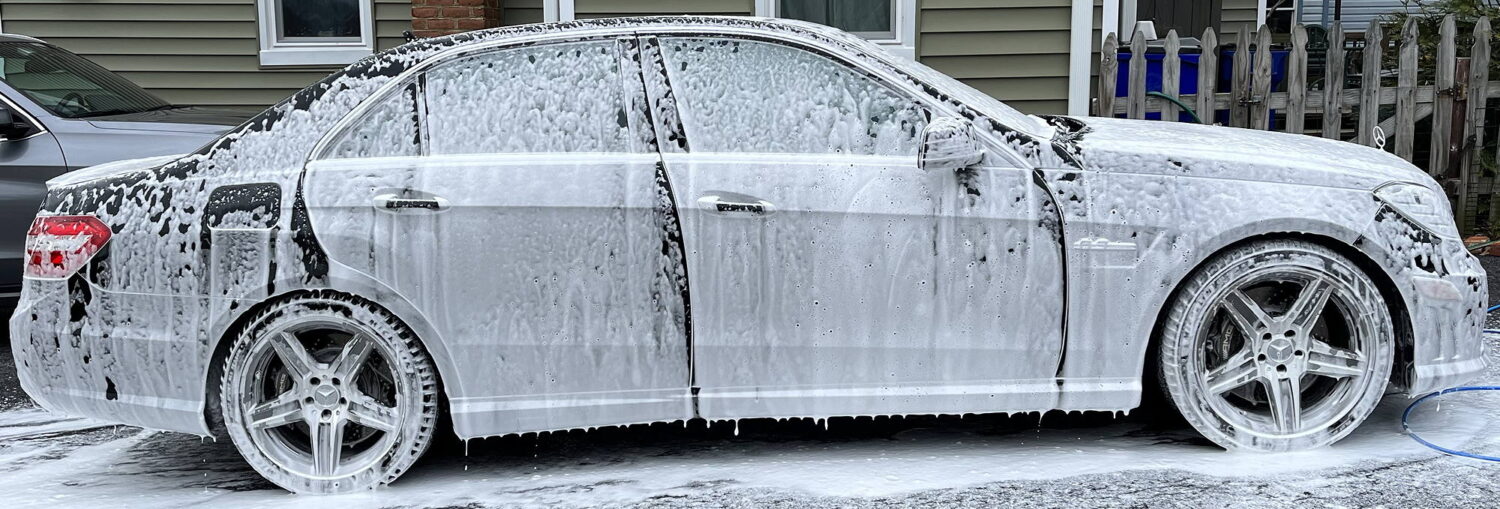In a previous blog post, I mentioned that my core service is a detail with ceramic coat, which I offer at three service levels: good, better, and best. Since I’m working mostly with cars that are drivers, it makes no sense to do a concourse-level detail. That said, some cars do need more attention than others. So that’s why there are three levels. So what do the three levels mean, since they all involve the same decontamination wash, (usually with clay bar), and interior wash and vac?
- At the “Good” level, I’m focused on bringing back clarity and shine. About 25% of the defects (minor scratches, swirls, love marks) will be corrected and the surface will be ready for ceramic coating. This is what you might call a 5-10 footer. If you get close enough, you will still see the imperfections.
- At the “Better” level, I build on all the same services in the previous level, but pay extra attention to problem areas. These might be deeper scratches or etching from prolonged contaminants. These are the few areas that caught your attention from 5-10 feet away. About 50% of the defects (minor scratches, swirls, love marks) will be corrected and the surface will be ready for ceramic coating.
- At the “Best” level, I may have to spend time wet-sanding and polishing certain areas. I may find things that needed correction from the manufacturer, or spend considerable time trying to get an older panel to match the appearance of a more recently painted panel. These are imperfections you won’t be able to spot without a specialist light and by placing your eye very near the surface of the paint. About 80-85% of the defects (minor scratches, swirls, love marks) will be corrected and the surface will be ready for ceramic coating.
Notice that I stopped at 85%. Getting from 85-95% of perfect will double or triple the time and cost and not yield satisfying results. If that’s what you’re interested in, I recommend a full restoration.
Here’s an example of the good-better conversation. This is a 2011 AMG E63 daily driver. Overall, the paint is in excellent condition for a 13 year old car. We started a detail at the Good level. This video shows the difference a basic polish can make. Most of the swirl marks and major imperfections were corrected in a couple of passes with the polisher, but some major imperfections still remained.

Because those scratches were so close to the line from the old paint protection film (PPF) on the hood, I suggested we spend some extra time on them (Better), but not go crazy. That PPF needs to come off soon and if we go crazy polishing that area now, we will create a significant difference in the thickness of the clear coat that will need to be corrected when the PPF is removed. Rather than paying twice for the same work, I suggested we could significantly reduce the visibility of the scratches and still have enough paint left to work with in the future if the customer wanted. The result was pretty good.


At the rear of the car the conversation went the other way. With scratches that go all of the way to the plastic, the best approach is to just polish and judiciously apply some touch-up paint. Unless you’re willing to paint the entire top surface of the bumper cover, it doesn’t make sense to spend much more time on it. Sometimes good enough is good enough.


